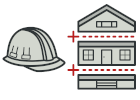
Python 生成器模式讲解和代码示例
生成器是一种创建型设计模式, 使你能够分步骤创建复杂对象。
与其他创建型模式不同, 生成器不要求产品拥有通用接口。 这使得用相同的创建过程生成不同的产品成为可能。
复杂度:
流行度:
使用示例: 生成器模式是 Python 世界中的一个著名模式。 当你需要创建一个可能有许多配置选项的对象时, 该模式会特别有用。
识别方法: 生成器模式可以通过类来识别, 它拥有一个构建方法和多个配置结果对象的方法。 生成器方法通常支持方法链 (例如 someBuilder.setValueA(1).setValueB(2).create())。
概念示例
本例说明了生成器设计模式的结构并重点回答了下面的问题:
- 它由哪些类组成?
- 这些类扮演了哪些角色?
- 模式中的各个元素会以何种方式相互关联?
main.py: 概念示例
from __future__ import annotations
from abc import ABC, abstractmethod
from typing import Any
class Builder(ABC):
"""
The Builder interface specifies methods for creating the different parts of
the Product objects.
"""
@property
@abstractmethod
def product(self) -> None:
pass
@abstractmethod
def produce_part_a(self) -> None:
pass
@abstractmethod
def produce_part_b(self) -> None:
pass
@abstractmethod
def produce_part_c(self) -> None:
pass
class ConcreteBuilder1(Builder):
"""
The Concrete Builder classes follow the Builder interface and provide
specific implementations of the building steps. Your program may have
several variations of Builders, implemented differently.
"""
def __init__(self) -> None:
"""
A fresh builder instance should contain a blank product object, which is
used in further assembly.
"""
self.reset()
def reset(self) -> None:
self._product = Product1()
@property
def product(self) -> Product1:
"""
Concrete Builders are supposed to provide their own methods for
retrieving results. That's because various types of builders may create
entirely different products that don't follow the same interface.
Therefore, such methods cannot be declared in the base Builder interface
(at least in a statically typed programming language).
Usually, after returning the end result to the client, a builder
instance is expected to be ready to start producing another product.
That's why it's a usual practice to call the reset method at the end of
the `getProduct` method body. However, this behavior is not mandatory,
and you can make your builders wait for an explicit reset call from the
client code before disposing of the previous result.
"""
product = self._product
self.reset()
return product
def produce_part_a(self) -> None:
self._product.add("PartA1")
def produce_part_b(self) -> None:
self._product.add("PartB1")
def produce_part_c(self) -> None:
self._product.add("PartC1")
class Product1():
"""
It makes sense to use the Builder pattern only when your products are quite
complex and require extensive configuration.
Unlike in other creational patterns, different concrete builders can produce
unrelated products. In other words, results of various builders may not
always follow the same interface.
"""
def __init__(self) -> None:
self.parts = []
def add(self, part: Any) -> None:
self.parts.append(part)
def list_parts(self) -> None:
print(f"Product parts: {', '.join(self.parts)}", end="")
class Director:
"""
The Director is only responsible for executing the building steps in a
particular sequence. It is helpful when producing products according to a
specific order or configuration. Strictly speaking, the Director class is
optional, since the client can control builders directly.
"""
def __init__(self) -> None:
self._builder = None
@property
def builder(self) -> Builder:
return self._builder
@builder.setter
def builder(self, builder: Builder) -> None:
"""
The Director works with any builder instance that the client code passes
to it. This way, the client code may alter the final type of the newly
assembled product.
"""
self._builder = builder
"""
The Director can construct several product variations using the same
building steps.
"""
def build_minimal_viable_product(self) -> None:
self.builder.produce_part_a()
def build_full_featured_product(self) -> None:
self.builder.produce_part_a()
self.builder.produce_part_b()
self.builder.produce_part_c()
if __name__ == "__main__":
"""
The client code creates a builder object, passes it to the director and then
initiates the construction process. The end result is retrieved from the
builder object.
"""
director = Director()
builder = ConcreteBuilder1()
director.builder = builder
print("Standard basic product: ")
director.build_minimal_viable_product()
builder.product.list_parts()
print("\n")
print("Standard full featured product: ")
director.build_full_featured_product()
builder.product.list_parts()
print("\n")
# Remember, the Builder pattern can be used without a Director class.
print("Custom product: ")
builder.produce_part_a()
builder.produce_part_b()
builder.product.list_parts()
Output.txt: 执行结果
Standard basic product:
Product parts: PartA1
Standard full featured product:
Product parts: PartA1, PartB1, PartC1
Custom product:
Product parts: PartA1, PartB1
 冬季促销!
冬季促销!
